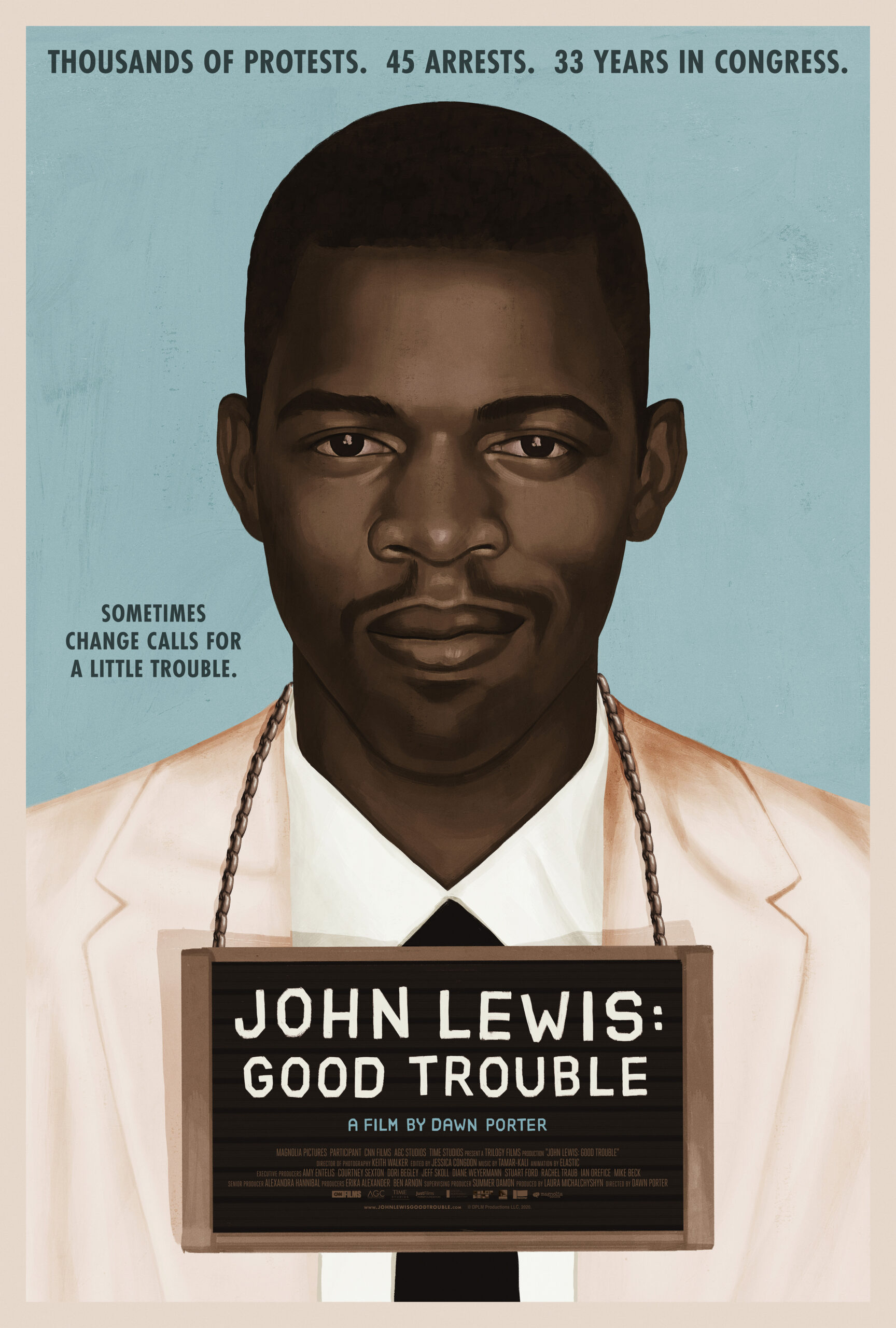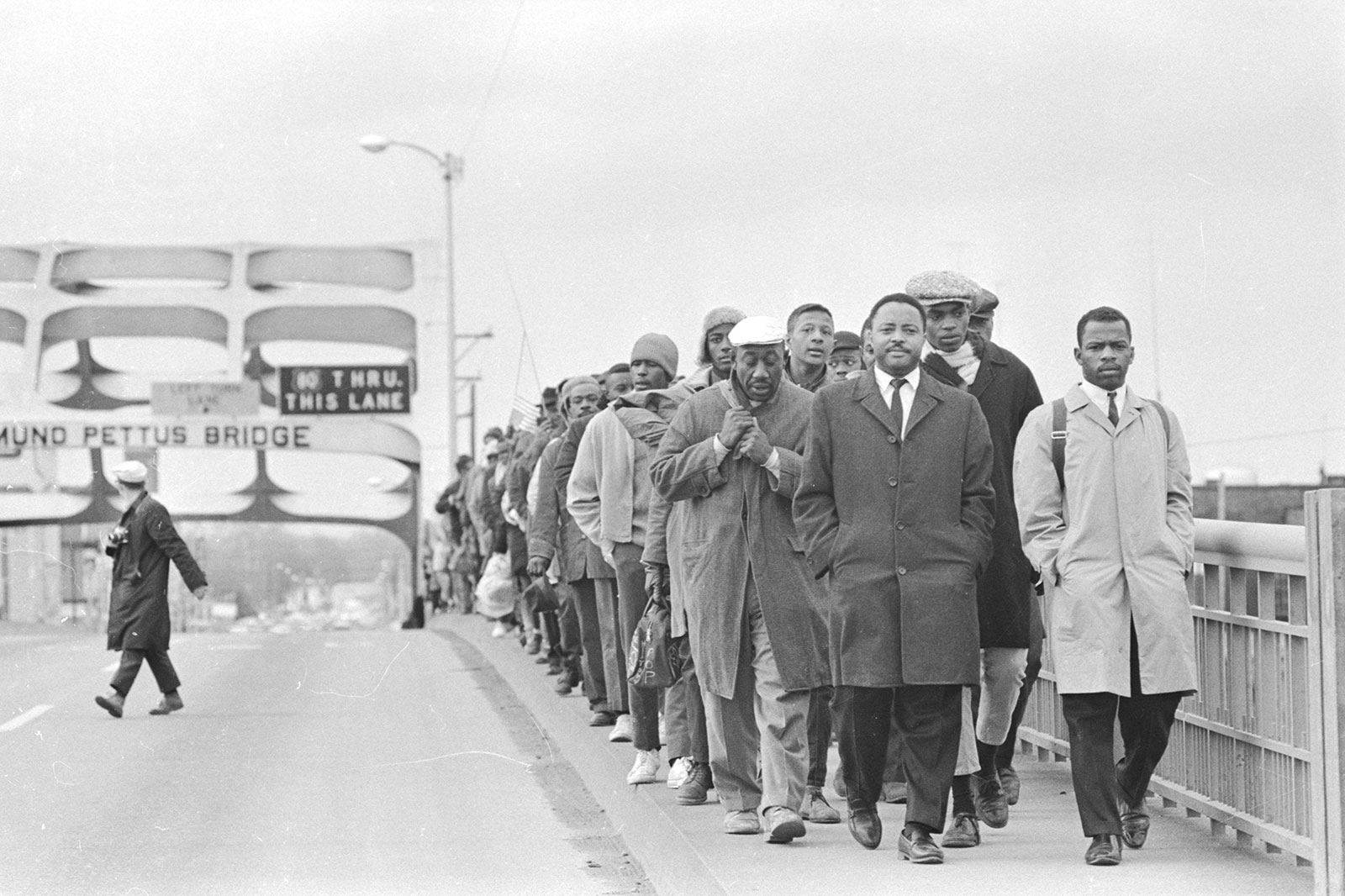There are few living legends, and John Lewis is one of them. The beloved congressman of Georgia and celebrated civil rights activist who famously marched across the bridge in Selma, Alabama has become a modern-day symbol of resiliency and hope in action. And part of that resiliency extends to his stage IV pancreatic cancer battle. In late 2019, Congressman Lewis shared the devastating news with the country. Yet, despite it all, he remains on the front lines in the fight for justice and equality.
In celebration of his life and accomplishments, CNN will release a new documentary, “John Lewis: Good Trouble,” tomorrow on demand via various streaming platforms, including afisilver.afi.com and themiracletheatre.com. Here, we spoke with director Dawn Porter about the life and legacy of John Lewis and what his work both in the past and in the present can teach us about never giving up.
HOW DID YOU KNOW WHAT MOMENTS TO FOCUS ON WHEN YOU LOOKED AT CONGRESSMAN LEWIS’ CURRENT LIFE?
My idea was: let’s remember who he was, let’s talk about what he’s doing now. When you make a cinema verite documentary, you get what you get. So I was in really close contact with his staff about what hearings he was going to preside over, what constituent meetings he was going to have, what other speeches he was making, and where he was going.
A big thing for us was that it was an election year. It was a congressional election year. He was running unopposed, so I was really curious about what your role is when you are running unopposed, but you’re a senior member of the House of Representatives. And it turned out that was really interesting. He worked on behalf of other new members. And I thought that was really interesting to show, to visually depict that this baton was passed and he’s guarding his own legacy by helping. Not everybody goes out and works as a surrogate for other candidates, let alone a 79-year-old civil rights hero. So many people call on him, and he was just a little Energizer bunny. And it was just a fun part of the political process that you don’t often get to see—how the members support each other, but also how important he was to these new members and how generous he is with his time on behalf of other people.
ONE POWERFUL MOMENT THAT STRUCK ME WAS SEEING CONGRESSMAN LEWIS WATCH FOOTAGE FROM WHEN HE WAS YOUNG. WHAT WAS THAT LIKE FOR YOU AS A FILMMAKER?
One of the things I love about documentary filmmaking is we get to use our brains and make it up as we go. He restages his trip across the Selma bridge every year. He uses it as a historic pilgrimage. And he takes members of Congress from both parties and other people who want to come with him. He retraces his steps. You go to a church and then there’s a service. And then everybody walks together across the bridge.

Part of that trip was a walk to [The Legacy Museum] in Alabama. While we were there, the congressman was watching some video that was of him as a 19-year-old and he turned to his left and there was a high school kid. He said to this kid, “I can’t believe it’s me up there. It feels like another person that I’m watching. I can’t believe that’s me.” It just stuck in my mind. They had a conversation about what it’s actually like on the bridge.
As a documentary person, I feel like it’s my job to elicit details that you might not have heard before. So I was kind of inspired by that conversation—by the congressman and that teenager—so I was like, well what if we surround him with images of himself? We rented the Arena Stage [at the Mead Center for American Theater] in Washington D.C. We erected three large screens and put him on a stool in the middle of them, and turned the lights down. The effect [was like] he was there. It’s kind of like this virtual reality experience.
He was responding and telling us little details about that time that I think really helped them come alive for the present-day viewer who may not have understood what happened on those days. I also feel like the congressman knows and respects people. People come up to him and cry and they’re really moved. But sometimes I wonder if he knows why we’re so emotional. I thought it was important to show him what he did. Why what he did meant so much to so many people?
WERE THERE ANY OTHER SURPRISING THINGS YOU LEARNED ABOUT THE CONGRESSMAN DURING THE MAKING OF YOUR DOCUMENTARY?
One weekend, we took him home to his land that he grew up on and many of his siblings were there. We all have our place within the family. But if you have siblings, you don’t think about how your place in the family affects your siblings. I can’t say whether it’s the first time or not, but I know it meant a lot to him to hear from his siblings about how they felt about his activity. And they were really honored. They were proud, but they were also scared. When his older brother is talking, he wipes a tear away. When you think of what he did, it wasn’t just threats to his own life. It was for the whole family.
I think we all like to wonder what we would do in crisis situations like that. And I think one of the reasons why I have the utmost respect for the congressman—and many people do—is because he made the hardest choice and he kept making it. He went to those Nashville sit-ins, trained those young people. They knew exactly what they were getting into. They didn’t wake up one day and start marching. They planned and intentionally put themselves in harm’s way, knowing the risks, and then they did it again and again and again. That is just a remarkable, selfless act.
WERE THERE CHALLENGES IN PUTTING THIS ALL TOGETHER IN ONLY TWO YEARS?
Oh, yes. You’re working with a sitting member of Congress. You can’t film everything. He has a really hectic schedule. I live in California, he’s in D.C. or Atlanta. And then the process of just searching for the archive. We really wanted to show not just the seminal moment on the bridge, but the moments before. We spent a long time combing through the archives to try and find images that were going to bring that time to life.

WERE THERE CHALLENGES IN PUTTING THIS ALL TOGETHER IN ONLY TWO YEARS?
Oh, yes. You’re working with a sitting member of Congress. You can’t film everything. He has a really hectic schedule. I live in California, he’s in D.C. or Atlanta. And then the process of just searching for the archive. We really wanted to show not just the seminal moment on the bridge, but the moments before. We spent a long time combing through the archives to try and find images that were going to bring that time to life.

WHAT LESSONS DO YOU HOPE VIEWERS TAKE AWAY FROM WATCHING THE FILM?
I really hope that people understand, John Lewis became famous for being brave. But I think people don’t realize how much strategy supported that bravery. He and other people he marched and protested with planned their excursion for months and years before they executed them. I want those [them] to be appreciated for their intelligence as much as their bravery because I think you need both.
And then the second thing is you just can’t give up. Things can seem really dark and they are really dark. We’re not imagining that. But we can’t just go home and pull the covers over our heads. You have to engage in whatever way you are able. So, if you are able to tutor a child or donate school supplies, you are contributing to your community. John Lewis is a message of hope, is a message of resilience and courage and intelligence. It was literally the honor of my life to spend so much time with him and tell his story.
This interview has been condensed for space.








